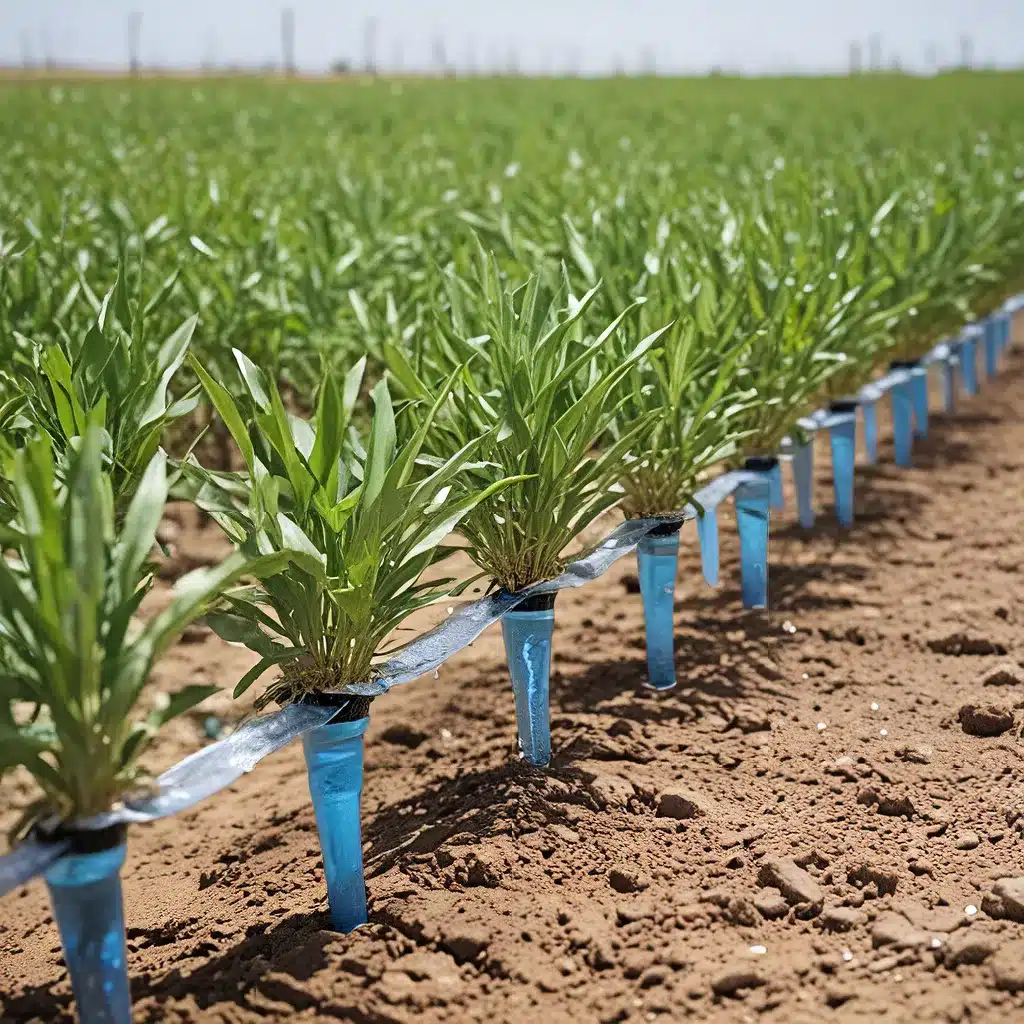
Diving Into the Depths of Water Conservation
As a passionate advocate for environmental sustainability, I’ve often found myself captivated by the intricate dance between our precious water resources and the innovative practices that aim to conserve them. It’s a delicate balance, one that requires a deep understanding of the challenges we face and the creative solutions that can help us address them.
In today’s world, where water scarcity is a growing concern, it’s essential that we explore every avenue to optimize our water usage. And that’s precisely what I’m here to do – to dive into the depths of water conservation and uncover the transformative practices that are reshaping the way we approach this vital resource.
The Thirsty Realities of Agriculture
Let’s start by addressing the elephant in the room – agriculture. According to the Nevada Irrigation District, this sector accounts for a staggering 85% of water consumption in the United States. That’s a mind-boggling statistic, one that highlights the urgent need for innovative water management strategies within the agricultural industry.
Imagine a world where farmers and ranchers could harness the power of technology and cutting-edge techniques to significantly reduce their water usage without sacrificing productivity. Well, my friends, this is precisely the reality we’re moving towards, and the results are nothing short of remarkable.
The Rise of Precision Irrigation
One of the most transformative advancements in agricultural water conservation is the widespread adoption of precision irrigation systems. These marvels of engineering deliver water directly to the root zone of crops, minimizing evaporation and ensuring that every precious drop is put to use.
Drip irrigation, for instance, has proven to be a game-changer, capable of reducing water usage by up to 80% compared to traditional irrigation methods. By strategically placing tubing and emitters throughout the field, farmers can precisely control the flow of water, ensuring that it reaches the plants that need it most.
But the benefits of precision irrigation don’t stop there. These systems also help reduce nutrient loss through leaching, contributing to a more sustainable and environmentally friendly approach to farming. And the best part? They can even lead to increased crop yields, making them a win-win for both the farmer and the environment.
Harnessing the Power of Data
Of course, precision irrigation is just one piece of the water conservation puzzle. Another critical factor is the effective management of irrigation schedules and soil moisture levels. And this is where the power of data comes into play.
Imagine a farmer who can access real-time data on soil moisture, weather patterns, and crop water needs. Armed with this information, they can make informed decisions about when and how much to water their fields, optimizing water usage and minimizing waste.
The TAPS program, for example, is a regional farm management competition that encourages farmers to compete with one another to use inputs, like water, as efficiently as possible while still achieving high crop yields. By fostering a spirit of innovation and friendly competition, this program has helped farmers across the country discover new ways to conserve this precious resource.
The Soil Factor: Enhancing Water Retention
But water conservation in agriculture isn’t just about the delivery system or the data – it’s also about the soil itself. After all, that’s the foundation upon which our entire food system rests.
According to the Nevada Irrigation District, improving soil structure and water-holding capacity can be a game-changer for water conservation. Practices like incorporating compost, applying mulch, and using cover crops can all work to enhance the soil’s ability to absorb and retain moisture, reducing the need for frequent irrigation.
Imagine a field where the soil is like a sponge, soaking up every precious drop of water and releasing it slowly and steadily to the thirsty plants. This is the kind of resilient, drought-resistant landscape that farmers and ranchers are striving to create through innovative soil management techniques.
Dry Farming: Embracing the Unpredictable
But what about those regions where water is in even shorter supply? In these arid environments, traditional irrigation methods may not be a viable option. Enter the concept of dry farming – a low-input, place-based approach to crop production that relies on the natural rainfall of the region.
Dry farming may sound like a risky proposition, but for those who have mastered its intricacies, it can be a remarkably effective way to conserve water while still producing bountiful harvests. By carefully selecting drought-tolerant crops, implementing specialized tilling practices, and leveraging the unique microclimate of their land, dry farmers are proving that it is possible to thrive even in the face of water scarcity.
Cultivating a Sustainable Future
As I reflect on the wealth of innovative water conservation practices found within the agricultural sector, I can’t help but feel a sense of hope and excitement for the future. These aren’t just isolated initiatives – they’re part of a growing movement that is reshaping the way we think about water usage and environmental stewardship.
And it’s not just the farmers and ranchers who are leading the charge. Government agencies, research institutions, and even competitions like the TAPS program are all playing a vital role in supporting and promoting these transformative practices.
So, what does the future hold? Well, if the ingenuity and dedication of those working towards water conservation are any indication, I’d say the future is looking bright. By continuing to explore new frontiers, embrace cutting-edge technologies, and foster a spirit of collaboration, we can ensure that our water resources are not only preserved but used in the most efficient and sustainable way possible.
After all, every drop counts when it comes to building a more resilient and environmentally conscious world. And I, for one, am thrilled to be a part of this journey, one drip at a time.


